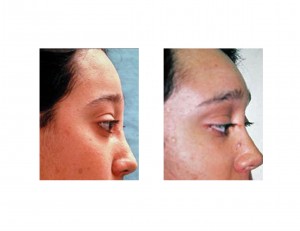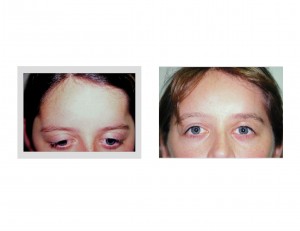The forehead has a variety of shapes that do differ based on gender. Men will tend to have flatter fuller foreheads with more prominent brow bones (supraorbital ridges) while women’s foreheads will usually be softer, less full, and with flatter brow bones that tend to angle off into the temporal region. Whether it be by a congenital deformity (such as craniosynostosis), frontal tumor resection (craniotomy flap) or from prior contouring purposes (FFS, facial feminization surgery), there are rare instances when one desires to have a fuller or more prominent brow definition restored.


There is also the option of a synthetic implant carved out of silicone or polyethylene. (Medpor) This requires a greater degree of skill and time to get all the edges flat and flush with the surrounding bone. It is easy to see how an edge step-off can be felt through the skin unless it is done perfectly. Feathering edges and blending into the surrounding bone is much more assured with the moldable materials.

A non-open scalp approach (endoscopic) can be used in select cases of forehead augmentation. When it is the central or more upper parts of the forehead that are being augmented, the endoscopic approach using PMMA as an injectable material can be done. PMMA can be injected and pushed around as a congealed putty and shaped by external molding through the forehead skin. HA is a quite different material and its handling properties do not permit anything but an open approach scalp approach. But working down at the brow area, which is a very low point for endoscopic visualization, is even difficult with PMMA. Therefore, I would advocate an open approach for any amount of brow bone augmentation.
Dr. Barry Eppley
Indianapolis, Indiana


